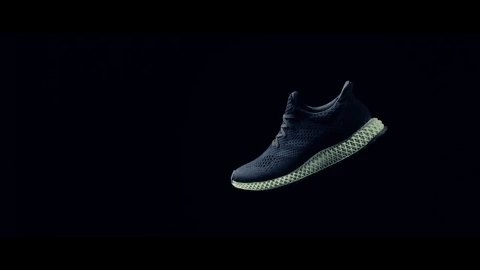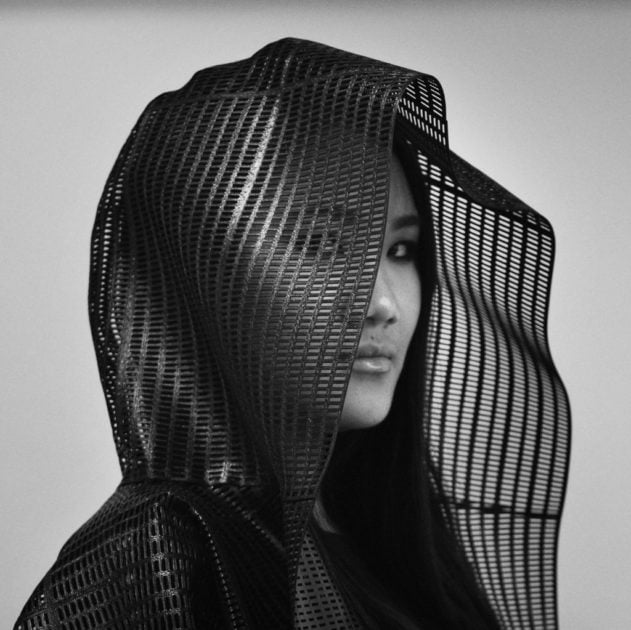
What is fashionable today, won’t be tomorrow. As Coco Chanel famously said, “Fashion is made to become unfashionable.” You don’t have to be a fashionista to appreciate how clothing makes the man or the woman. How do you stand out from the crowd in this age of mass consumerism, and create something that goes beyond trends (in a sustainable way)? After all, when styles change, fashion moves from the window display to the discount rack, then to the landfill. But 3D printing is positioned to change all that. From shoes to hats and everything in between, 3D printing is allowing for mass customization — plus reduced waste. And it’s a green revolution in which anyone with 3D design skills or the will to learn can play a part.
As I’ve written about previously, footwear is taking advantage of 3D printing in a big way. Adidas introduced their prototype FUTURECRAFT 4D sneakers early last year, featuring 3D printed midsoles made with Carbon’s CLIP high-speed resin printing technology. The one-piece midsoles are made from 20,000 struts that can be individually tuned, providing more control on energy return and different levels of support to the heel, transition, and forefoot zones.
On January 18th, Adidas’s FUTURECRAFT 4D sneakers launched in the New York City area through retailers KITH, Packer, and SNS. At $300 per pair, they’re likely more appealing to sneakerheads than to the casual shopper. If you’re looking for something even more exclusive, check out the FUTURECRAFT 4D Arsham Future. According to KicksOnFire, Adidas collaborated with NYC-based artist Daniel Arsham to create the limited-edition sneaker. Available next September, they’ll set you back $450. The FUTURECRAFT line represents Adidas’ first step toward the goal of a 3D printer in every store, custom-printing shoe elements for customers on demand, so prices are likely to come down in years to come.
The first fully functional 3D printed dress was created by Finish architect Janne Kyttanen in 2000. But his 3D printed shoes and accessories are real standouts. His sculptural wedge heels are 3D printed and then attached to leather uppers. The Sedona Wedges feature a sleek modern design, while the Splinter Wedges have a spiky profile. And his Bullet Wedges look fractured, as if blown out by a bullet. Kyttanen is also known for his 3D printed handbags. The chainmail-like Le 69 bag is fashioned after the 1969 classic Paco Rabanne design. And his Punchbag with its knuckleduster handle is in MoMA’s permanent collection. See it being printed in the video below:
Sylvia Heisel is a New York fashion designer who’s redefining fashion forward design. Heisel’s bespoke 3D printed coat is custom fitted to the wearer, with the help of 3D body scanning, and is printed in recyclable materials. This reduces waste and ensures proper fit. Heisel also offers a custom fit 3D printed dress.

Heisel’s bespoke 3D printed coat (image courtesy the designer)
3D “printed” fashion isn’t limited to plastics, metals and resins. Three dimensional knitting creates garments faster and more efficiently than traditional means. American Trench uses a Shima Seiki Whole Garment weaving machines to create their fisherman’s style waffle-knit sweater in one piece. And because it’s made in a single piece there are no seams to restrict movement. Vessi uses 3D knitting to make what they claim is the world’s first waterproof knit shoes. The Flash Knit upper repels water while allowing moisture to escape.
3D Printed Fashion Design: Where to Start
You can design your own custom-fit apparel with the help of 3D scanning. As our own Angela Linneman reports, Occipital’s Structure Scanner and Skanect software can provide high quality scans, which can be used for 3D printed fashion. 3DPrint.com’s 3D Scanning Guide 2017 (by yours truly) details more 3D scanning options, including DIY solutions.
And it’s always a good idea to take physical measurements of your subject, as some 3D scanning solutions may not be to scale. The 3D scan can then be uniformly scaled by inputting the correct measurement from a single dimension (i.e. if you have the height of your model). Once you have your 3D scan, you can import it into a 3D modeling app, such as Autodesk’s Fusion 360 (it’s free for non-commercial use). Design around or on the 3D scan to create a beautiful custom piece. Don’t know how to 3D model? No worries. Shapeways’ free tutorials can get you started.
3D printing is truly revolutionizing how we make garments and making them more personal. It just requires an unconventional mind to make use of the possibilities. At Shapeways, you can bring your own inspired fashions to life.



Fusion 360 is not “free for non-commercial use”. All Autodesk offers is a free 30-day *trial*
Hhm, having written that (and not being able to delete it), there is a tiny, out of the way, link on their site that says if your company is a startup earning less than $100,000yr or you are a “hobbyist” you *may* qualify for a free version for which you have to apply to Autodesk to use.